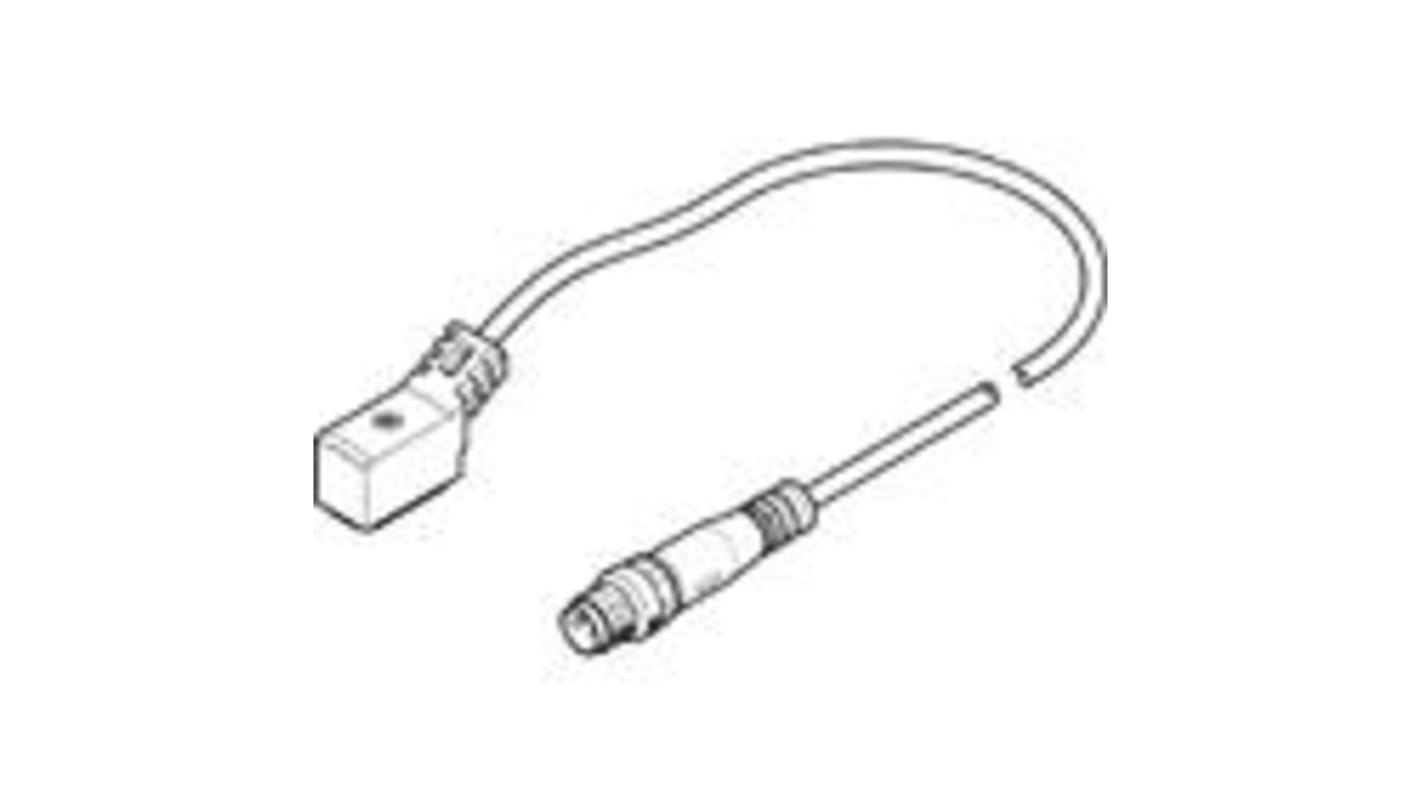Festo NEBV Connector Lead, 8047683
- RS Stock No.:
- 181-6478
- Mfr. Part No.:
- NEBV-Z4WA2L-R-E-0.5-N-M8G3-S1
- Brand:
- Festo

Bulk discount available
Subtotal (1 unit)*
£43.08
(exc. VAT)
£51.70
(inc. VAT)
FREE delivery for orders over £50.00
In Stock
- 15 unit(s) ready to ship
- Plus 14 unit(s) ready to ship from another location
Need more? Click ‘Check delivery dates’ to find extra stock and lead times.
Units | Per unit |
|---|---|
| 1 - 4 | £43.08 |
| 5 - 9 | £41.36 |
| 10 + | £40.50 |
*price indicative
- RS Stock No.:
- 181-6478
- Mfr. Part No.:
- NEBV-Z4WA2L-R-E-0.5-N-M8G3-S1
- Brand:
- Festo
Specifications
Technical Reference
Legislation and Compliance
Product Details
Find similar products by selecting one or more attributes.
Select all | Attribute | Value |
|---|---|---|
| Brand | Festo | |
| Accessory Type | Connector Lead | |
| Manufacturer Series | NEBV | |
| Power Supply Voltage | 20.4 → 26.4V dc | |
| Model Number | 8047683 | |
| Product Type | Connecting Cable | |
| Select all | ||
|---|---|---|
Brand Festo | ||
Accessory Type Connector Lead | ||
Manufacturer Series NEBV | ||
Power Supply Voltage 20.4 → 26.4V dc | ||
Model Number 8047683 | ||
Product Type Connecting Cable | ||
- COO (Country of Origin):
- TR
Festo Pilot Valve Connecting Cable, 0.5m Length, 2.9mm Diameter - NEBV-Z4WA2L-R-E-0.5-N-M8G3-S1
Complete your pilot valve setup with this reliable cable from Festo. As well as making connections, it reduces holding current and offers circuit protection to boost electrical safety. An IP65 rating means the wire is protected against dust and is able to withstand low-pressure water jets from all directions, making it suitable for use in harsh conditions. The outer sheath is made of TPE-U(PUR), which has the high tensile strength needed to maintain hold under the compressive stress caused by impact from machines. This cable has a CRC rating of 3, so it's corrosion-resistant and ideal for use in humid environments.
• Ambient temperature range between -10°C and +50°C, to suit demanding conditions
• Yellow LED provides visual feedback on operating status
• PP insulation material protects you from electric shocks
• Terminated with an angular socket at one end and a straight plug at the other for simple installation
• Product weight of 18g for easy handling
• Yellow LED provides visual feedback on operating status
• PP insulation material protects you from electric shocks
• Terminated with an angular socket at one end and a straight plug at the other for simple installation
• Product weight of 18g for easy handling
Applications
• Medical equipment
• Automotive industry
• Beverage production
• Automotive industry
• Beverage production
What's the advantage of having a reduced holding current?
A lower holding current keeps the circuit from overheating. When a circuit is heated up, its resistance increases which leads to a decreased flow of current than is required to power the circuit, resulting in loss of efficiency.
